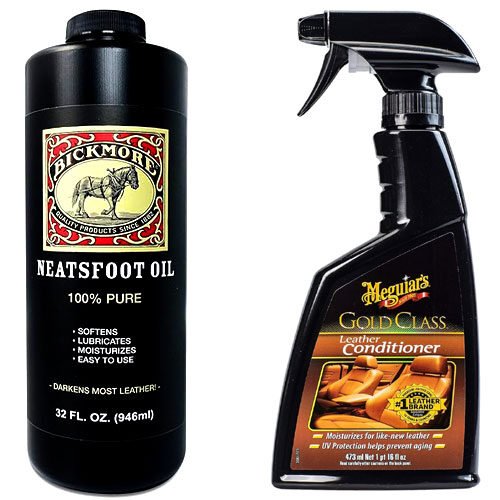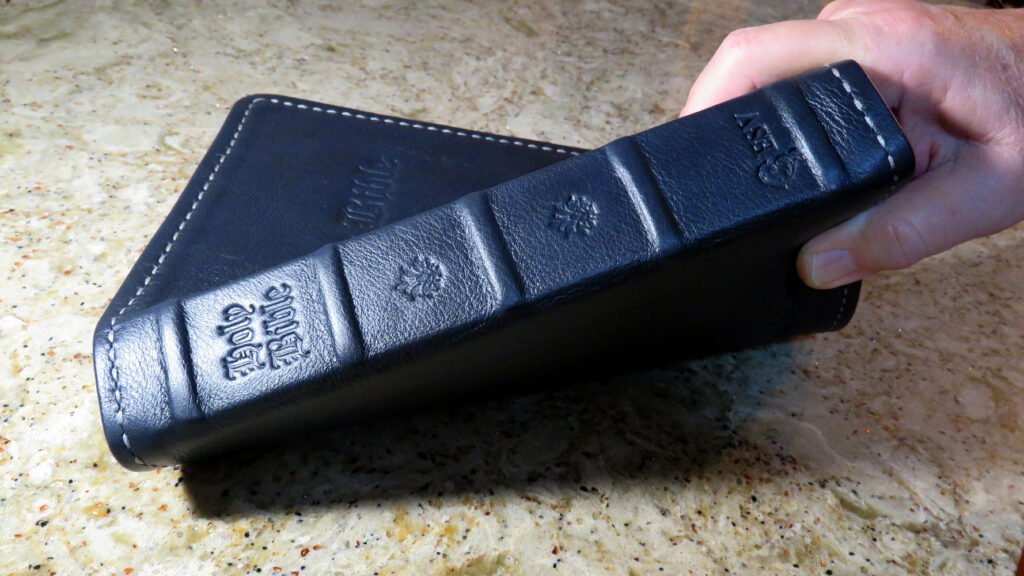Introduction to Leather Bibles
Leather Bibles hold a prominent place in the hearts of many individuals, reflecting both personal and communal faith. The unique qualities of leather provide not only durability but also an aesthetic appeal that enhances the sacred experience of owning such a text. The luxurious texture and timeless design of leather contribute to the overall significance of these religious documents, making them cherished possessions that deserve special attention and care.

Understanding the importance of caring for a leather Bible goes beyond superficial maintenance; it is an acknowledgment of the impact these texts have on spiritual life. Leather is a natural material that, when properly maintained, can withstand the test of time, ensuring that the words inscribed within remain safe and accessible for generations. The combination of both the tactile and visual elements found in a well-cared-for leather Bible deepens the reader’s connection to the text.
As leather develops a unique patina over time, this transformation enhances not only the character of the Bible but also its emotional resonance with the owner. The effort put into preserving a leather Bible contributes to both its longevity and its sentimental value. Regular cleaning, conditioning, and appropriate storage are essential practices that will maintain the integrity of the leather while also enhancing its beauty.
In the paragraphs that follow, we will explore specific techniques for caring for leather Bibles, including recommended products, methods for addressing wear and tear, and tips for safeguarding against environmental factors. By implementing these care strategies, you can ensure that the spiritual significance of your leather Bible remains intact for years to come, allowing it to serve as a steadfast companion on your faith journey.
Understanding Leather Types
The type of leather used in Bible covers can greatly influence not only its aesthetic appeal but also its durability and care requirements. The three most common types of leather utilized for this purpose are full-grain leather, top-grain leather, and genuine leather, each possessing unique attributes that contribute to the overall quality of the product.

Full-grain leather is considered the highest quality leather available. This type is created from the top layer of the hide and retains all of its natural grain and imperfections. These characteristics allow the leather to age beautifully, developing a rich patina over time. Full-grain leather is also highly resistant to wear, making it an excellent choice for a Bible cover that will be used regularly. However, it requires specific care; regular conditioning is necessary to maintain its elasticity and prevent it from drying out.
Top-grain leather falls one step below full-grain leather in the hierarchy of quality. This leather has had the outermost layer sanded away, which removes imperfections but also compromises some durability and breathability. As a result, while top-grain leather is still a resilient option, it is more prone to scratches and requires more frequent conditioning. This leather option is often favored for its smooth finish and aesthetic appeal, making it suitable for beautifully crafted Bible covers.
Finally, genuine leather, often referred to as “split leather,” is made from the layers of hide that remain after the top layers have been removed. While this leather is more affordable, it lacks the same durability and elegance of the previous two types. It may also require different care practices, as it is typically coated with a protective layer that can wear off over time. Thus, while it is an economical choice, genuine leather may require more attention to ensure longevity.
Essentials of Cleaning Your Leather Bible
Cleaning your leather Bible is essential in maintaining its beauty and durability over time. The first step is to assess the condition of your Bible, determining whether it requires a simple dusting or a more thorough cleaning. For routine maintenance, a soft, dry cloth is typically sufficient to remove dust and dirt. This should be done regularly to prevent the build-up of grime that can damage the leather.
When more intensive cleaning is necessary, apply a specially formulated leather cleaner. It is crucial to select a product that is free from harsh chemicals, as these can compromise the integrity of the leather. Look for cleaners explicitly designed for leather goods, as they are crafted to treat the material gently while effectively addressing stains and marks. Always test the cleaner on a small, inconspicuous area first to ensure it does not cause discoloration or deterioration.
For deeper cleaning, follow the manufacturer’s instructions. Generally, dampen a soft cloth with the cleaner and wipe the leather in circular motions, being careful not to saturate the material. After applying the cleaner, use another dry cloth to remove any excess moisture and product. This step is vital because lingering moisture can lead to mold and mildew, adversely affecting the condition of your Bible.
The frequency of cleaning your leather Bible will depend on its usage and exposure to various elements. For those who frequently handle their Bible, consider cleaning it every few months. However, if it remains relatively untouched, an annual cleaning may suffice. Remember to protect your leather Bible from direct sunlight and humidity, and always store it in a cool, dry place to preserve its longevity.
Conditioning Your Leather Bible
Conditioning your leather Bible is a vital aspect of its upkeep, ensuring that the material remains supple and resistant to cracking or damage over time. Leather is a natural product that can dry out due to environmental factors such as heat, humidity, and exposure to sunlight. Therefore, applying a quality leather conditioner is necessary for maintaining its aesthetic and structural integrity.

Various types of leather conditioners are available, each designed to nourish and protect leather in different ways. Water-based conditioners provide moisture and are easy to apply, while oil-based conditioners can penetrate deeper, offering long-lasting protection. Cream conditioners are another option, often enriched with beeswax or lanolin, which can help restore suppleness while providing a protective barrier against environmental elements. When selecting a conditioner, it is essential to choose a product specifically formulated for leather and free from harsh chemicals that could harm your Bible.
The application of leather conditioner should typically be performed every six months, but more frequent conditioning may be necessary in extremely dry or variable environments. Before applying, ensure the surface of the leather is clean and free from dust or dirt. Use a soft cloth to apply a small amount of conditioner evenly, working it into the leather with gentle, circular motions. Allow the conditioner to absorb fully before using your Bible again, as this will enhance its protective properties while ensuring it remains smooth and comfortable to handle.
Regular conditioning not only extends the life of your leather Bible but also enhances its appearance, giving it a polished and cared-for look. In conclusion, investing time in maintaining the leather of your Bible through proper conditioning techniques will serve to preserve its beauty and usability for many years to come.
Protecting Your Leather Bible from Damage
Leather Bibles, cherished for their beauty and durability, require careful handling to ensure their longevity. Protecting a leather Bible from common hazards such as water, heat, and dirt is essential for maintaining its integrity over the years. The first line of defense is proper storage. It is advisable to keep your Bible in a cool, dry place, away from direct sunlight and high humidity, which can lead to leather deterioration. A temperature-controlled environment is optimal, as excessive heat can cause leather to crack and become brittle.
Handling a leather Bible with clean, dry hands is crucial, as oils and dirt from the skin can transfer onto the pages and cover, potentially leading to discoloration. Furthermore, be mindful of where you place your Bible when reading. Avoid placing it on the floor or on surfaces that are prone to spills. Utilizing a designated reading place can help mitigate these risks.
Water exposure can be particularly damaging; leather is porous and can absorb moisture, leading to warping and mildew. If your leather Bible gets wet, it is important to dry it immediately with a soft cloth and allow it to air dry away from direct heat sources. These careful measures will help preserve the beauty and condition of your leather Bible, allowing you to enjoy it for years to come.
Repairing Minor Wear and Tear
Caring for your leather Bible involves fundamental maintenance and timely repairs to preserve its integrity. Minor wear and tear, such as scratches, scuffs, and loose pages, can often be addressed at home with the right tools and materials.
For minor scratches on the leather cover, a leather conditioner can prove effective. The application of the conditioner helps to rejuvenate the leather, restoring moisture and life. Begin by cleaning the area with a soft, damp cloth to remove dirt and dust. Once the surface is clean, apply a small amount of leather conditioner using a soft cloth, rubbing it in gently. This method not only helps reduce the visibility of scratches but also nourishes the leather, adding a layer of protection against future wear.

Scuffs can also be treated using a similar approach. If the scuff appears particularly stubborn, you might consider using a leather repair kit, which often includes fillers matching the original leather color. Once you’ve prepared the kit as per its instructions, apply the filler with a fine applicator, ensuring to blend it smoothly with the surrounding leather.
For loose pages, a straightforward solution is to use archival-quality adhesive or a specialized bookbinding glue. Apply the adhesive carefully to the edge of the loose page and press it back into its place, ensuring it aligns properly. It is vital to avoid excess glue, as this could seep onto adjacent pages, leading to further issues.
While these minor repairs can successfully prolong the life of your leather Bible, it’s crucial to recognize when to seek professional help. If you encounter significant damage, such as deep cuts or loose bindings, entrusting the repair to a professional bookbinder with experience in leather restoration is advisable. Simply contact us! This proactive approach will ensure that your cherished Bible continues to be a source of inspiration for years to come.
Long-Term Storage Tips
Storing your leather Bible properly is essential to ensure its longevity and preserve its quality for years to come. There are several important considerations to keep in mind when deciding how to store this cherished item. First and foremost, the environment in which your Bible is stored plays a crucial role in its condition. It is advisable to keep the leather Bible in a cool, dry place, as extreme temperature fluctuations and high humidity levels can lead to deterioration of the leather and ink.
A temperature range between 60 to 70 degrees Fahrenheit is generally ideal for leather preservation. Alongside temperature, humidity levels should be maintained between 40% and 60%. Excessive moisture can cause the leather to develop mildew and mold, while overly dry conditions can lead to cracking or brittleness. To maintain the right humidity levels, consider using a dehumidifier or placing silica gel packets in the storage area. These packets absorb moisture effectively and help create a stable environment for your leather Bible.
For additional protection, you may place your Bible in a soft, breathable fabric bag or wrap it in cotton cloth. Avoid plastic materials, as they can trap moisture and lead to mold growth. Lastly, refrain from placing heavy objects on top of the Bible, as this can cause indentations or warping.
By implementing these best practices for long-term storage, you can significantly contribute to the preservation of your leather Bible, ensuring it remains a treasured heirloom for future generations.
The Importance of Regular Inspections
Regular inspections play a crucial role in the longevity and preservation of your leather Bible. By frequently examining your Bible, you can identify potential issues before they escalate into more significant problems. This proactive approach is essential for maintaining the quality and appearance of the leather. Leather, while durable, can be vulnerable to wear and tear, making inspections an integral part of regular maintenance.
When inspecting your leather Bible, consider the following checklist to ensure it remains in optimal condition:
- Examine the Cover: Look for signs of scuffing, scratches, or discoloration that may indicate wear.
- Check the Edges: Assess the edges for any fraying or peeling, which could lead to further damage if not addressed.
- Inspect the Spine: Ensure the spine is intact and that the binding is secure. Loose pages can lead to further deterioration.
- Look for Creases or Cracks: Gently flex the leather to spot any cracks or deep creases that may require conditioning.
- Assess the Pages: Pay attention to the pages themselves for any tears or discoloration, as moisture can lead to mold or mildew.
In addition to the visual inspection, it is essential to feel the texture of the leather. A leather Bible should feel supple and pliable. If it appears dry or rough, it may require conditioning to prevent cracking. Addressing these issues promptly can save you from costly repairs or irreversible damage.
The importance of periodic maintenance cannot be overstated. By regularly inspecting your leather Bible and addressing minor concerns early, you can extend its lifespan significantly and preserve its beauty for generations to come. Ultimately, this attention to detail fosters a deeper connection to your Bible, enhancing your overall reading and spiritual experience.
Conclusion: Embracing Your Leather Bible for Lifelong Use
In this comprehensive guide to caring for your leather Bible, we have explored various methods and strategies that ensure its longevity and aesthetic appeal. A leather Bible, crafted with care and quality materials, holds great sentimental and spiritual value for many individuals. Hence, maintaining its condition is essential not only for preserving its beauty but also for enhancing its functionality over time.
Throughout this article, we emphasized the significance of regular maintenance practices such as cleaning, conditioning, and appropriate storage methods. Conditioning the leather periodically helps to prevent dryness and cracking while bolstering its resilience against everyday wear and tear. Additionally, we highlighted the importance of using the right cleaning solutions that are pH-balanced and specifically designed for leather. This not only ensures the effective removal of dirt and grime but also safeguards the integrity of the material.
Moreover, we discussed the role of environmental factors in the care of your leather Bible. Proper storage away from direct sunlight and humidity will help to mitigate the risk of damage caused by adverse conditions. By creating a suitable environment, you can further extend the life of your cherished item.
Ultimately, adopting these care practices fosters a deeper connection with your leather Bible. This relationship is built on respect and understanding, acknowledging that longevity and preservation are achievable through mindful handling and maintenance. It is our hope that by actively engaging in these preservation efforts, readers will be able to enjoy their newly rebound leather Bibles for years, even generations, to come. By doing so, not only will they cherish the written word contained within, but also the enduring beauty of the craftsmanship that surrounds it.

